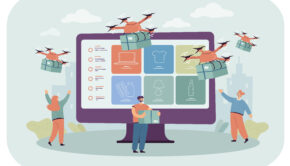How New Technologies Have Made Managing Agreements More Efficient
The efficiency of companies is becoming increasingly dependent on the methods it implies to manage their contracts. These days, it’s now crucial for companies to digitize their agreement management process to ensure greater security, efficiency, and an overall more satisfying user experience. That’s even clearer considering that businesses tend to have, on average, 9.2% of their bottom line eroded by faulty agreement management processes.
Technology within the digital agreement management sphere has continued to evolve, however, and that means companies now have opportunities to rid themselves of issues they’ve previously had to contend with, while realizing benefits that were previously out of reach.
The Most Important Drivers for Innovation
Innovation within agreement management tends to be driven by several factors, but there are a few that account for the most impactful changes. Customer experience stands out among these, as it routinely takes a central position in organizations making forward pushes towards having a more streamlined contract management process.
That makes sense considering how customer experience is where many of the downstream benefits of modern agreement management solutions lie. A stark example here is the electronic signature, which can relieve customers of the hassle of having to sign stacks of paper, all before needing to have them couriered to a supplier.
With a service like eOriginal SmartSign, an offering from eOriginal which debuted in the industry as one of the first of its kind, customers are able to make and transmit their signatures instantly, greatly streamlining the process on their end.
Employee experience benefits here too, with customers having more room to self-service, leaving employees to turn their attention to aspects of the customer journey that could still be improved upon. Even as customers run into issues, digital agreement technology makes it much easier for employees to guide them to a solution, especially when it features an easily navigable interface.
Workflow and Overarching Organizational Benefits
Today’s digital agreement solutions are moving past simply offering optimizations for agreeing to contracts. Instead, they are widening their scope and beginning to encompass activities that come before and after the contract has been drawn. Pre-contract issues, mostly related to misstating the terms of the agreement, are problems nearly 38% of businesses experience regularly with their contracts. Automatically generated contracts that are compiled from customer-gathered data eliminate this problem.
Equally troubling problems may come after the contract has been accepted and even executed. These issues mainly involve data entry processes that have to do with closing out the contract. Modern digital agreement solutions can help here, too, as they keep track of milestones within the contract and its execution, automatically updating a resource file that can be referred to later.
The organizational benefits associated with modern agreement management solutions extend beyond individual projects. More than that, they play a role in such foundational aspects as keeping track of the goals of the business. One of these is a quicker realization of revenue through streamlined processes that allow for faster turnaround times and updating of company records.
A benefit related to this one is that contracts can also be set to automatically renew when needed, cutting out hours of unnecessary work on both the supplier and customer sides.
Partial and Fully Digitized Agreement Management Processes
A seeming advantage to the digital agreement solutions of today is that they offer opportunities to digitize processes in a modular manner, updating some processes while leaving others. This makes the software easily adaptable to different industries, particularly those that may need to automate some processes while leaving others.
For most businesses, however, there’s a distinct advantage in fully digitizing. For one, it means there is less and less room for human error, making it less likely that organizations have to revert to earlier stages in their agreement generating process.
Another advantage is that workflows tend to be less clunky when each process within the workflow has been logged. This makes for accurate documentation and also aids in research when companies want to examine their processes to discover where they can achieve greater efficiency.
The idea that leaving certain individual processes undigitized is also built on a misconception. Digital agreement solutions offer structure but they also provide room for flexibility to administrators, letting them adapt individual steps within the structure to their present needs.
Today’s methods for managing agreements have allowed for different steps within the contract-forming process to move along seamlessly. Downstream, companies are receiving benefits that range from smoother workflows to across-the-board improvements in their internal processes as well as their dealings with customers.










![iPhone in Numbers – 10 Year Anniversary [Infographic]](https://technofaq.org/wp-content/uploads/2017/07/iPhone-Infographic-150x150.png)





